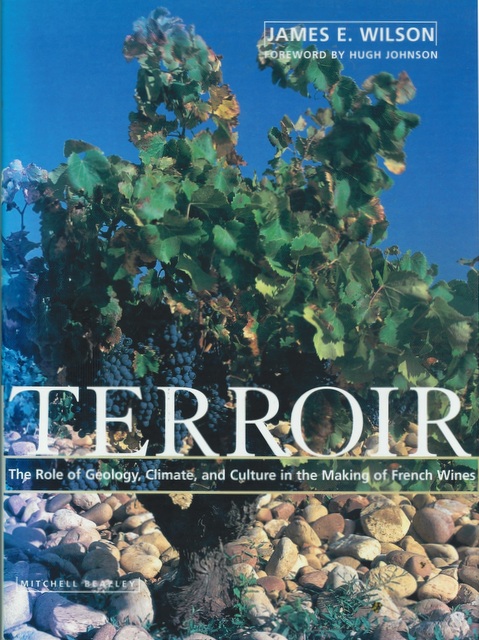In his brilliant book Terroir: The Role of Geology, Climate, and Culture in the Making of French Wines, James Wilson, the American geologist explains terroir in the following terms:
The true concept [of terroir] is not easily grasped but includes physical elements of the vineyard habitat – the vine, the subsoil, siting, drainage, and microclimate.
His survey of the geology of French regions and vineyards is exemplary and his efforts to explain the differences between adjacent vineyards in Burgundy and Bordeaux, for example, was ground-breaking at the time of publication.
His work in describing how soils differ from the top of a slope to the middle and then the lower slopes is important in understanding why some tiny ‘climats’ are held in such reverence in these areas.
However, even though the book is over three hundred pages in length only two or three paragraphs are devoted to what lives in the soil! And these paragraphs mainly talk about the acid secretions of bacteria and how this slowly leads to the breakdown of solid rocks into soils.
The foreword to the book was penned by legendary wine writer Hugh Johnson. He praises the emphasis in the book on the soils of France where he starts by confirming that the soils vary more than the type of vines do:
Soils are more various than vines. They form by an infinity of processes from raw materials as contrasting as sea shells and lava. In their physical make-up, chemical reactions, their interactions, in whether they are willing or grudging to release their elements, from water to metals, they encompass wide, sometimes contradicting, differences. If Chablis tastes different from Meursault, Margaux from Pauillac, the first place we must look for the difference is underground.
So, both these authors intuitively understood that soils are a vital element in terroir and they both appreciated that the minerals in the soil somehow play a part in making the wine taste different. But the book was published nearly twenty years ago and research into an even more important factor was still in its infancy, namely what ‘lives’ in the soil!
However it is still a landmark book with the best explanations of the geology of most wine regions in France, written in a very easy to follow manner.
This book is highly recommended.























